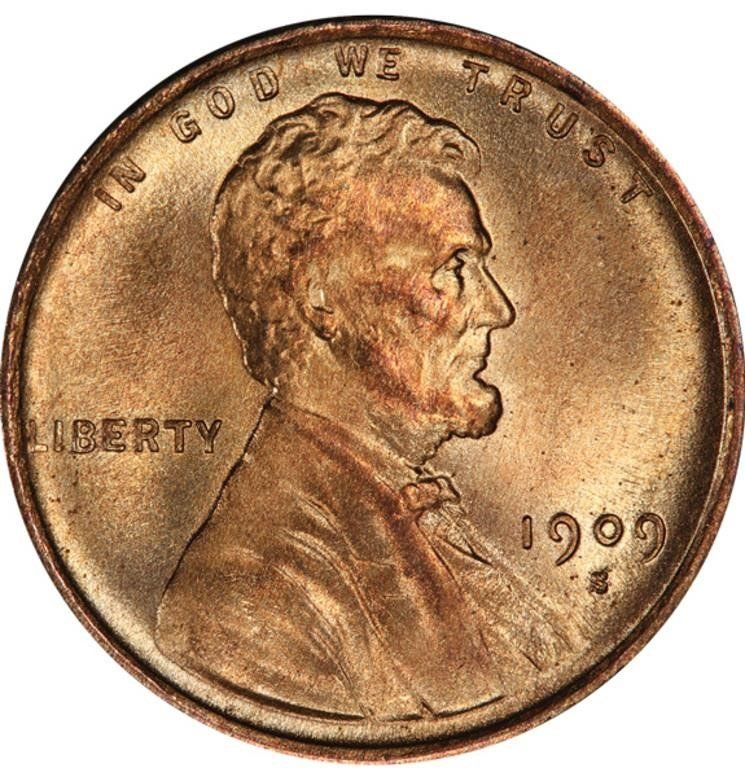Unearthing the Rich Tales of America's Beloved Cent

The Hidden Tales of a Simple Penny
Ever held a penny and wondered about its story? Let's face it, we've all tossed a cent or two into a jar, not giving it a second thought. But what if I told you that one little penny, specifically the Lincoln Wheat Cent, could unfold a tale as rich as any history book?
Now, I get it.
You're probably thinking, "It's just a penny, right? What's so special about that?" That's where the magic lies. These pennies aren't just spare change; they're tiny time capsules, each with a unique narrative.
You see, every Lincoln Wheat Cent carries more than just monetary value – it's a piece of history, a fragment of a bygone era.
Think about the hands it has passed through, the pockets it has jingled in. We're talking about a coin that witnessed World Wars, economic booms, and cultural shifts. It's like holding a piece of the past right in the palm of your hand.
So, are you ready to dive into a journey that's worth more than a few cents? Together, we'll uncover the tales hidden in these copper treasures. Let's peel back the layers of time and discover "A Penny's Worth of History: Exploring the Lincoln Wheat Cent." Let's begin.
The Birth of a Numismatic Icon
The Lincoln Wheat Cent, first minted in 1909, holds a special place in the world of numismatics. It's not just a coin; it's a snippet of American history, a piece of art, and a collector's dream. This article delves into the fascinating journey of this iconic coin, exploring its design, history, and unique characteristics.
Let's start with the inception of this coin. Picture the year 1908. The U.S. Mint, under President Theodore Roosevelt's directive, chose sculptor Victor D. Brenner to design a new cent. Why Lincoln, you might wonder? Well, the coin was to honor the centennial year of Abraham Lincoln's birth. It was a groundbreaking moment - the first time a U.S. President was featured on a widely circulating coin.
Initial Controversy and Legacy
Now, imagine the excitement in 1909 when the first Lincoln cents rolled out. But here's an intriguing twist: these initial coins had Brenner's initials, "VDB," stamped on them. Collectors today know these as the 1909 VDB and the 1909-S VDB cents. However, barely after they started circulating, the Mint stopped their production.
Why?
Well, the numismatic community was actually divided on this. Some felt the initials were too prominent, while others opposed their removal.
Think about this - a simple set of initials causing such a stir! The Mint had even considered modifying them to just the first initial of Brenner's last name. But Charles Barber, another coin designer, was against it, fearing confusion with his own designs. It's intriguing how personal pride and identity were entwined with these tiny metallic pieces.
Fast forward to 1918, a year after Barber's death, and Brenner's initials made a comeback. This time, they were subtly placed on the coin's obverse, just beneath Lincoln's shoulder. It's a little detail, but for collectors, it's a crucial part of the coin's identity.
A Coin in Transition
Now, let's talk about the composition of the Lincoln Wheat Cent. Originally struck in 95% copper, the coin underwent a dramatic change in 1943. World War II was raging, and copper was needed for the war effort.
So, for just a year, the penny was made of zinc-coated steel. But here's a fascinating fact: a few error coins from 1944 were mistakenly struck on steel planchets. These are some of the most sought-after pennies today!
In 1959, the coin underwent another significant change. The wheat design on the reverse, which had been a defining feature, was replaced by Frank Gasparro's Lincoln Memorial design. It marked the end of an era for the Wheat Cent.
But where did Brenner get his inspiration for this iconic design? Interestingly, it was reminiscent of his earlier work – a desk plaque of Abraham Lincoln he crafted in 1907 for the Gorham Manufacturing Company.
The coin's obverse features Lincoln facing right, a dignified and familiar portrayal. On the reverse, two stalks of durum wheat frame the words "ONE CENT" and "UNITED STATES OF AMERICA," with the motto "E PLURIBUS UNUM" along the top edge.
Let's not forget the stars of the show – the 1909-S VDB and the 1909 VDB cents. These initial mintings, with Brenner's full initials on the reverse, are not just coins; they're treasures. They encapsulate a moment in time, a story of design, controversy, and historical significance.’
Embracing the Legacy in Our Hands
So, we've journeyed together through the riveting saga of the Lincoln Wheat Cent, unearthing its hidden stories and historical significance.
You might be sitting there, penny in hand, feeling a newfound respect for this tiny piece of metal. It's no longer just 'change' - it's a gateway to history, isn't it?
Remember how we brushed off these pennies, never really seeing them for the historical treasures they are? Now, you're probably looking at them with a bit of awe, a touch of nostalgia, maybe even a sprinkle of pride.
It's like discovering a hidden gem in your own backyard.
And hey, I get it. It's easy to overlook the ordinary, to dismiss the mundane. But through this journey, haven't we learned that even the smallest things can have the grandest stories? Your newfound knowledge isn't just about coins; it's a testament to the richness of history that surrounds us, often unnoticed.
Take this newfound perspective, this appreciation for the little things with a big past, and let it remind you of the untold stories waiting to be discovered in the everyday.
Every Lincoln Wheat Cent in your collection, or even in your pocket, is a piece of the puzzle that is our collective history. It's a reminder that we're part of something much bigger, a narrative that spans generations.
So, stand tall, fellow history enthusiast, coin collector, or curious soul. You've embraced a story that many have overlooked. You've given a voice to the voiceless – a tiny, copper penny.
Now, go ahead, give that penny a second glance, a rightful place in your story. And remember, in the grand tapestry of history, every thread – no matter how small – plays a crucial role in the masterpiece.
Here's to finding the extraordinary in the ordinary, to discovering history in the palm of our hand. Let's keep exploring, keep learning, and keep valuing the small things that tell the greatest stories. Let's give a round of applause to history – and to ourselves for uncovering it.
You might like to check out
Lincoln Wheat Penny Prices/Values

